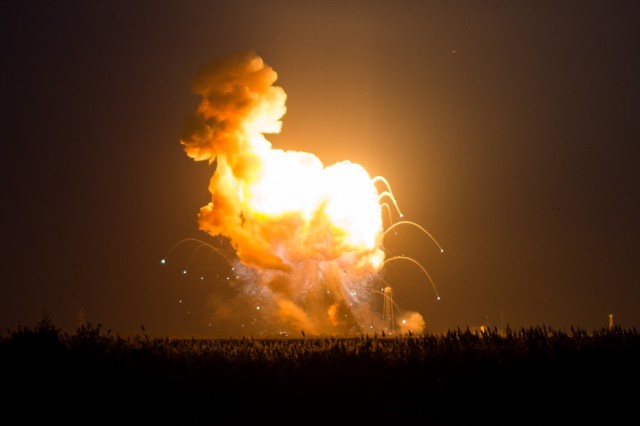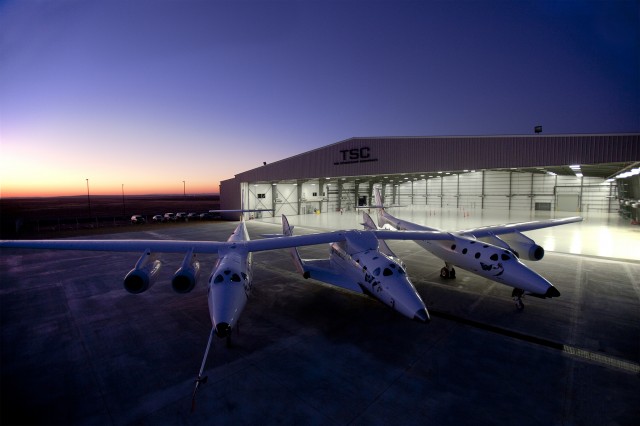
Antares explodes following a loss of thrust – Photo: NASA
The last week of October, 2014 was not a good one for commercial space flight. The week started with Orbital Sciences (OSC) attempting to launch their Antares rocket, carrying their unmanned Cygnus cargo vessel to the International Space Station. After a cancelled launch on Monday for a boat in the safety zone, the second attempt on Tuesday ended in failure.
Seven seconds after liftoff, a catastrophic failure in one or both of the engines caused the rocket to lose all thrust and fall back onto the launch pad, with a large explosion. OSC had launched the Antares four times previously with success, three of those times carrying a Cygnus craft. The company has been a major player in the spaceflight industry for over 30 years, having proven themselves with their unique Pegasus rocket, and a wide range of commercial satellites that they produce for various customers.

WhiteKnightTwo and SpaceShipTwo togther – Photo: Virgin Galactic
With the failure of the Antares still fresh in everyone’s mind, on the following Friday, Virgin Galactic prepared for a test flight of their private space passenger vehicle, SpaceShipTwo. Shortly after 10:00AM PST, Virgin sent out a cryptic tweet: “#SpaceShipTwo has experienced an in-flight anomaly.” That anomaly turned out to be a worst-case scenario, with the craft breaking up 55,000 ft above the Mojave Desert for still-unkown reasons. With one pilot in serious condition, the other was not as lucky. Mark Alsbury was the latest test pilot to pay the ultimate sacrifice in the pursuit of pushing aviation to the limits. Over the past 70 years, hundreds of brave pilots gave their all for the same purpose, and it has not been in vain.